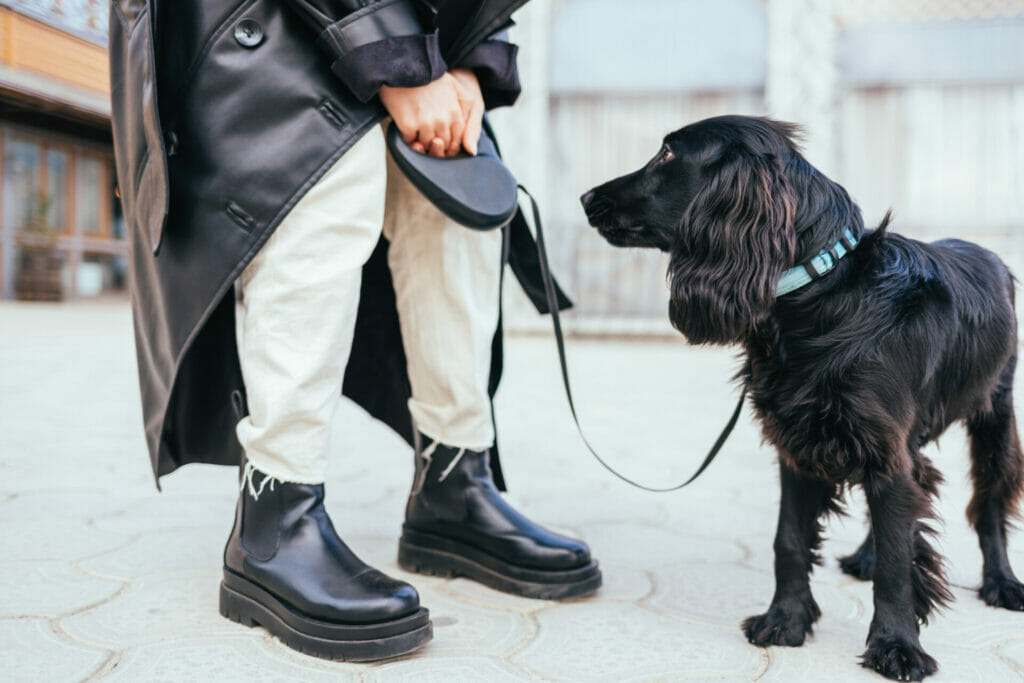When walking your dog, is it a constant struggle to keep your arm from getting yanked with every step? Leash pulling is a frustrating but very common behavioral challenge for dog owners. Dogs are excited to get out walking, and this can often mean dogs pulling on their leashes. The good news is with some training; you’ll be able to help prevent or reverse this behavior and keep your dog from pulling on their leash while out walking.
Why do dogs pull?
Dogs generally pull on their leash because they are interested in the world around them and eager to explore. Although leash pulling is frustrating to dog owners, the behavior is very natural to your dog. It’s important to remember that while your dog is pulling, they aren’t trying to hurt you or cause you discomfort. When working on changing your dog’s behavior, it’s important to stay calm and upbeat to keep your dog engaged.
Set dogs up for success:
The key to helping dogs to learn not to pull while walking on the leash is to make ourselves more exciting and rewarding for our dogs than the environment around us. Dogs pull because they are curious and eager to explore or to get to exciting things. To help your dog stop pulling, we want to reward our dogs for choosing to stay near us. To do this, we want to keep our rate of reinforcement high, meaning how frequently we are praising and feeding our dogs treats frequently. This will help to build value for your dog in being next to you.
Defining criteria:
To teach your dog to walk on a loose leash, it’s essential to have a clear picture of what you want loose leash walking to look like. For most dog owners, when you’re taking your dogs out walking, you want your dog to be near you, not jerking your arm or pulling you around. If your dog is near you, they are free to look around, sniff, and explore so long as there is no pressure on the leash. A formal obedience style heel with a dog watching their handler’s face isn’t necessary for everyday life and can be taught separately from loose leash walking.
Supplies needed for the dog walk
For teaching your dog loose leash walking skills, there are a few supplies you’ll need to have on hand. Supplies needed are:
- A basic leather, nylon, or biomethane six-foot leash. Do not use a flexi leash or long line for first starting to teach loose leash walking.
- A collar or harness that your dog is comfortable wearing.
- A large number of treats are cut into small pieces. Choose treats that are high value to your dog.
Selecting a location:
When teaching your dog to understand loose leash walking. When first introducing your dog to the idea of loose leash walking, it’s helpful to start in a quiet area with minimal distractions. By working on loose leash walking in a quiet area, your dog will have an easier time focusing on you, which will help them develop their loose leash walking skills. It can even be helpful to start teaching your dog about loose leash walking inside your house, before moving on to practicing outside, first in a quiet location and then in a more distracting outdoor area.

Getting started with loose leash walking:
When teaching your dog to walk on a loose leash, it’s essential to keep your rate of reinforcement high. This means we want to reward our dog often for the behavior that we want, which for loose leash walking means any interest in us.
Step 1: Leash your dog, and when your dog shows any interest in you or has a loose leash, praise your dog and give your dog a treat.
Step 2: Take a step forward, then praise and reward your dog for being near you.
Step 3: Take another step, and when your dog looks at you, or is near you, praise and treat your dog.
Step 4: Take another couple of steps and continue to praise and treat your dog. The goal here is to have a high rate of reinforcement because we want our dogs to start to understand that being right next to us is a highly rewarding place to be while on a leash, which will prevent pulling.
Step 5: Continue to take steps forward and, in a happy, upbeat voice, praise and reward your with tiny bits of treats to your dog for staying near you. At this stage, you can vary how many steps you take before treating your dog.
If at any point your dog gets distracted and begins to veer away from you, stop walking and wait. When your dog reorients towards you, give them lots of excited praise and treats. This will help to reinforce for your dog that choosing to stay near you is what you want and is a highly rewarding place to be. By rewarding your dog for choosing to be next to you, it’s more likely that your dog will make the decision in the future to stay near you and walk on a loose leash instead of pulling on the leash.




















